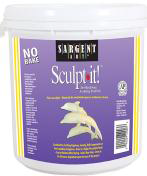Goal (Terminal Objective):
Students will create imaginative sculptures of creatures designed according to the ancient Mesopotamian principles of animism.
Goal (Terminal Objective):
Students will view exemplars of animism by the ancient Mesopotamians. Teacher will elicit responses from students about the kind of human characteristics ascribed to various animals. Suggestions include “courageous lions,” “proud eagles,” “sly foxes,” as well as the traits suggested by the animals used as mascots for athletic teams (Bears, Marlins, Tigers).
Objective:
Each student will design an imaginative creature that consists in part of at least three existing animals. Students will choose traits suggested by the animals to ascribe to their new creature. They will then build sculptures based on their designs.
National Standards:
Visual Arts Grades 9-12 Content Standard 1: Understanding and applying media, techniques, and processes
Visual Arts Grades 9-12 Content Standard 3: Choosing and evaluating a range of subject matter, symbols, and ideas
Visual Arts Grades 9-12 Content Standard 4: Understanding the visual arts in relation to history and cultures
Visual Arts Grades 9-12 Content Standard 5: Reflecting upon and assessing the characteristics and merits of their work and the work of others
Purpose:
Students will view and examine works of Mesopotamian art. Students will create an imaginative sculptural product.
New Vocabulary:
Three-dimensional, animism, form, texture, sculpture
Materials:

#22-2003 Sculpt-It! White Re-sealable Tub Modeling Compound

#98-8916 Paint Storage Tray

#22-1106 Metallic Acrylic Paint

#56-6012 Natural Hair Rainbow Brush Assortment
Time:
This lesson may be modified to last from two to five hours, depending upon size and complexity expectations.
Instruction:
Teacher presents and discusses exemplars. Teacher notes the Mesopotamian preference for bright metallic colors and deep blue lapis stones. Teacher organizes the classroom to facilitate students’ easy, orderly access to materials.
Activities:
(1) Guided Practice:
- Students reflect upon images provided byteacher.
- Students create thumbnail sketches for sculpturedesigns.
- Students draw three views in pencil for final sculpture on 9″ X 12″paper.
- Students model sculpture with Sargent Sculpt-It according to drawn design. Add textures tosculpture.
- Allow formed sculpture todry.
- Students may sand the surface with sandpaper, or smooth surface by rubbing witha dampfinger.
- Paint the finished sculpture with “Liquid Metals” Metallic AcrylicPaints.
- Clean up with soap andwater.


(2) Independent Practice and Check for Understanding: Teacher may supply photographs of animals to aid in visualizing multiple views.
Teacher approves students’ pencil drawings that demonstrate the use of correct interpretation of the assignment and attention to detail.
Teacher circulates among the working students visually recording (checklist) students demonstrating understanding of objectives, asking direct questions when understanding isn’t observable, and asking peers to critique each other.
Teacher helps and reinforces students as they work.
(3) Closure:Students display theirwork.
Evaluation:
Use teacher or class critiques to evaluate particularly strong works and strong qualities within works.
Level One — The finished sculpture clearly and convincingly suggests an imaginary creature with traits that are often attributed to humans. The student successfully recorded physical characteristics. Proportions are accurate. The details are interesting and clear. The sculpture can stand securely by itself. The student chose colors appropriate to Mesopotamian sculpture and used materials appropriately to create the desired visual effect. Craftsmanship is excellent.
Level Two — The finished sculpture suggests an imaginary creature with traits that are often attributed to humans. The student successfully recorded physical characteristics. Proportions are reasonable. The details are clear. The sculpture can stand securely by itself. The student chose colors appropriate to Mesopotamian sculpture and used materials appropriately to create the desired visual effect. Craftsmanship is good.
Level Three — The finished sculpture suggests an imaginary creature. The student successfully recorded physical characteristics. Proportions may be inaccurate. The sculpture lacks interesting details. The sculpture may need support to stand. The student used materials appropriately to create the desired visual effect. Craftsmanship is variable.
Level Four — The finished sculpture does not suggest an imaginary creature. Proportions are inaccurate. The sculpture lacks details. The sculpture cannot stand. The student used materials inappropriately. Craftsmanship is poor.
Extension:
This project can be extended to focus on mythical or religious figures from a variety of cultures, or from literature.
Resources:
www.fravahr.org/IMG/jpg/Guennol_Lioness.jpg
www.cartage.org.lb/…/sumeram.jpg
www.worldproutassembly.org/…/museum-relic.jpg
http://mcclungmuseum.utk.edu/specex/ur/ur-lyre2.jpg
Art Consultant



